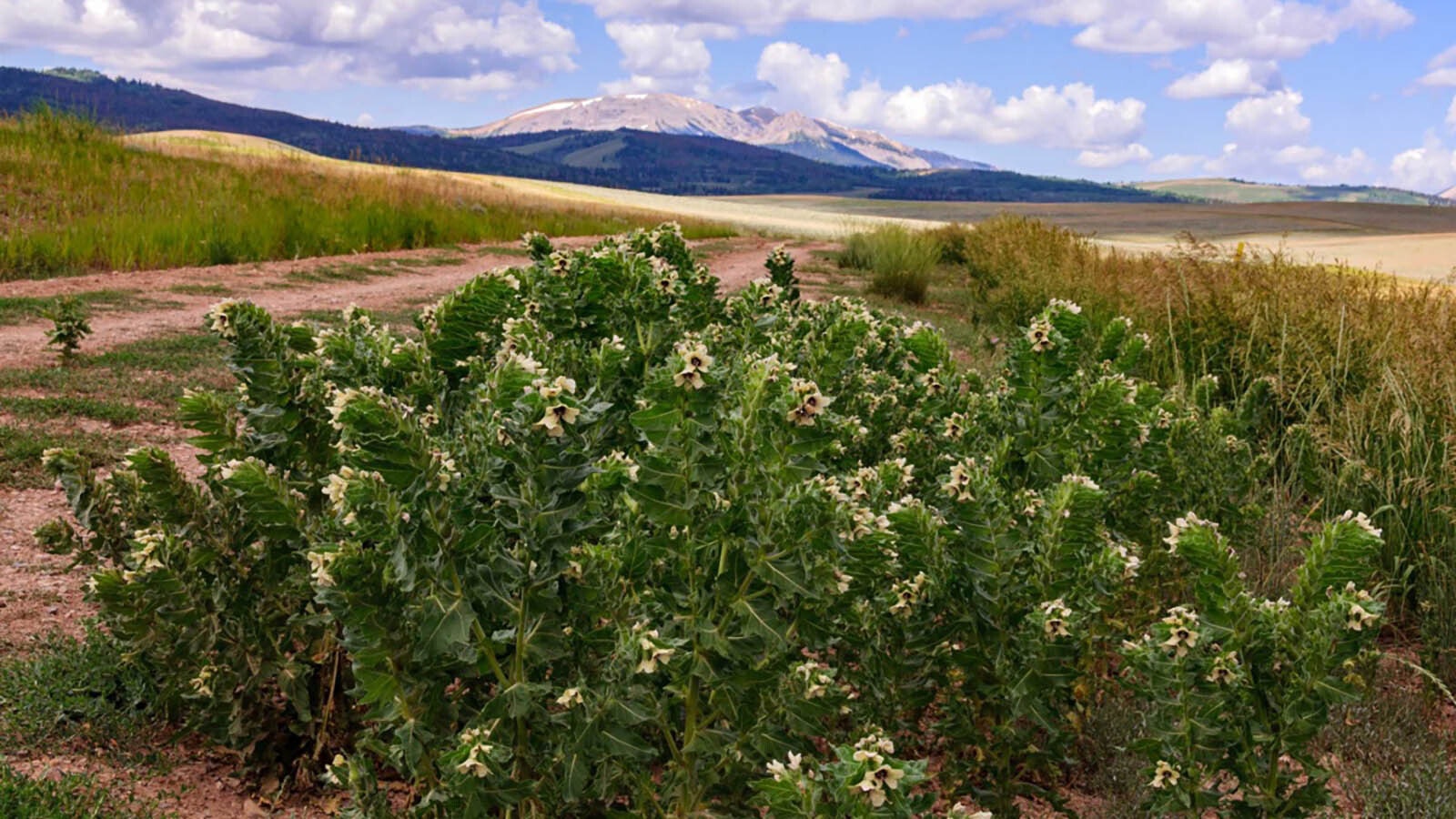Johnson County is paying bounty hunters to clear out some of the nasty and unwanted elements moving in. It’s also offering a premium for anyone who can uproot nefarious holdouts, dead or alive.
But they have to do it by the book.
The Johnson County Weed Bounty program is again active, and kicked off earlier this month with an all-hands-on-deck day of weeding at the boat docks of Lake De Smet north of Buffalo. Dozens of people pulled 2,000 pounds of invasive weeds growing in the area to kick off another summer at war with the damaging plants.
"It's gotten bigger every single year,” said Allen Buff, district supervisor of Johnson County Weed and Pest. "It's one day where we get people together for a couple of hours to pull weeds in a collaborative effort."
That was the kickoff for the program, but Johnson County Weed and Pest is paying bounties for spotted knapweed, oxeye daisy and other invasive plants through the end of July.
The pay is by the pound, so there's money to be made weeding out invasive species.
"If you can get people out there, it creates awareness for different species we're trying to control," Buff said. "Like a four-wheeler or a helicopter, it's another tool in the toolbox."

Wanted Dead Or Alive
The Johnson County Weed Bounty program started in 2018 as a partnership between several agencies with a similar goal: weeding out invasive species in northern Wyoming.
"It started as a cooperation between the Johnson County Conservation District, Wyoming Game and Fish, the Bureau of Land Management and the U.S. Forest Service," Buff said. "They all got together and thought they could make a difference by pulling weeds instead of spraying them."
Buff said the initial focus was uprooting invasive weeds in "sensitive riparian areas" where using chemicals would be dangerous. Herbicides used to kill the weeds in these areas could enter the water table, which wouldn't be ideal for anybody.
Instead, Johnson County residents were encouraged to take a hands-on approach, pulling the weeds themselves and getting a monetary reward for doing so. Seven years later, the Johnson County Weed Bounty program is stronger than ever.
"We've added a whole bunch of other cooperators like Johnson County Road and Bridge and chemical companies like Helena Agri-Enterprises that have either donated time or resources," he said. "Some of them were grilling hamburgers at the kickoff. It's been a really, really good program."
Christina Schmidt, a spokeswoman with the Wyoming Game and Fish Department, said the department works with weed and pest departments around the state. They eagerly support the Johnson County Weed Bounty program because it benefits the entire region.
"We all want healthy, native, diverse range lands in good health," she said. "Healthy range lands provide good forage for wildlife and livestock. Keeping invasive plants out and treating them where they are found prevents their spread, so programs like this are very impactful."
Price Per Pound
Johnson County Weed and Pest isn't offering bounties for every weed. It wants residents to go after the worst of the worst.
The bounty program pays $1 a pound for spotted knapweed, houndstongue and mullein. A pound of oxeye daisy and orange hawkweed is worth $1.25.
"Those are lighter and harder to find, which is why we pay more," Buff said.
Buff said all these invasive weeds are easy to pull. They have taproots, which means one quick tug is usually enough to remove the entire plant in one fell swoop.
"It's not like a rhizomatous root system, where you're creating more weeds by pulling and breaking it," he said. "The likelihood of eliminating them and their seed bank is a lot higher."
But the highest bounty is for information: $50 to anyone who reports new locations where ventenata, "cheatgrass," or medusahead are growing.
Buff said Johnson, Converse and Sheridan counties are "at the forefront" of countering these non-native grass species that have the potential to wreak havoc on native species growing in Wyoming's rangelands.
"Ventenata is pretty invasive, and we don't want it here," he said. "It's very high in silica, so cattle and other livestock won't graze it. We think it's coming in from the north, and we're trying to keep it out."
Many of these invasive weeds have already established themselves in Wyoming, but that doesn't mean anyone should give up or drop their guard. Even if there isn't a bounty for information, Schmidt encouraged all Wyomingites to report invasive plants whenever they encounter them.
"These species can have a really negative impact when they get a foothold and start to spread," she said. "If you spend time outdoors, please be familiar with them, keep an eye out for them, and report what you find."
Recognize And Report
In 2024, the Johnson County Weed Bounty program paid out bounties for 32,000 pounds of noxious weeds from mid-May through the end of July.
"One kid pulled 10,000 pounds of noxious weeds," Buff said. "We keep paying until everything goes to seed. At that point, we don't want to continue spreading the seeds around."
The program has added importance in 2025. Native and invasive plants are trying to reestablish themselves in the scars of scorched earth left in the wake of last fall's Elk Fire in the Bighorn Mountains.
Andrew Rossi can be reached at arossi@cowboystatedaily.com.





